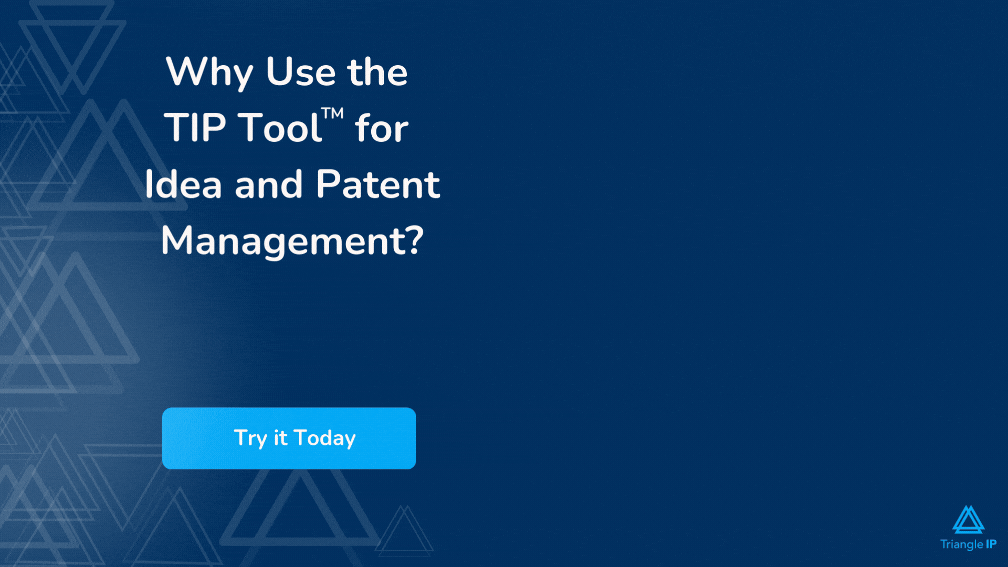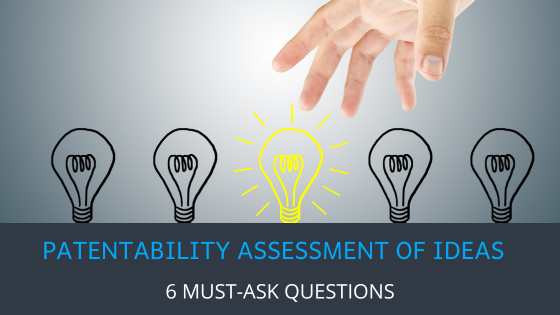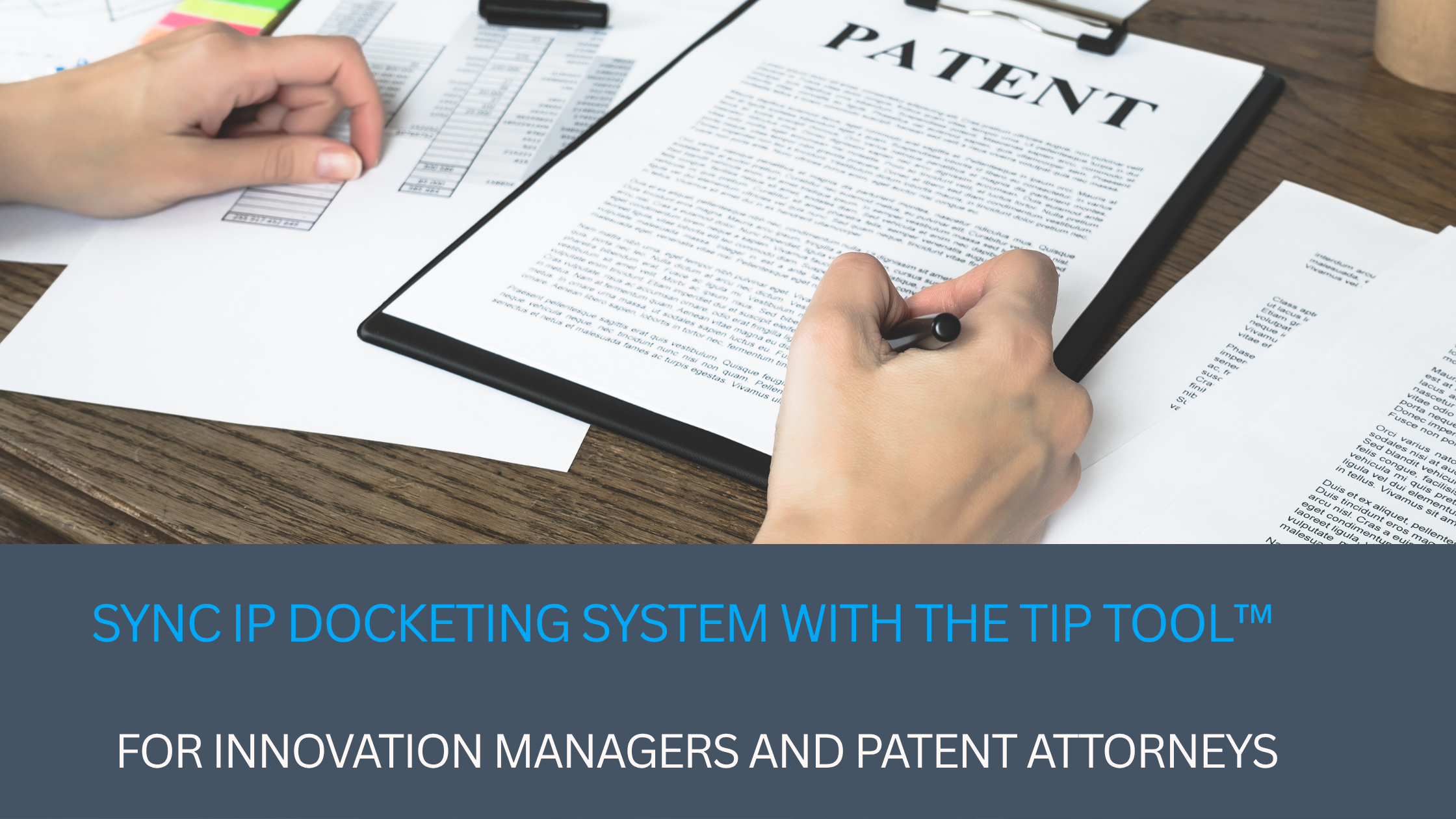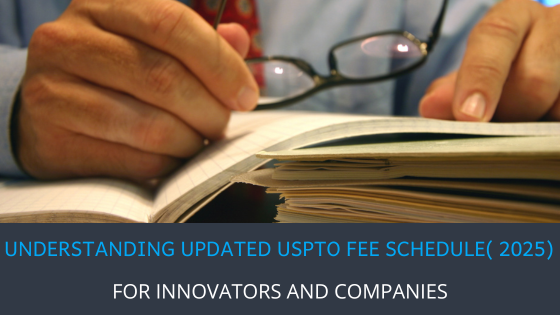Is your idea-to-budget ratio skewed—leaving you with more innovations than you can realistically patent? Evaluating ideas for patentability becomes a brain-drain exercise in such a scenario. However, selecting the right ideas will most efficiently put your budget to work. Balancing the delicate act of managing patent costs while ensuring quality is crucial in this context. This post lays out a framework for patentability assessment to help you choose ideas for patenting that have the most potential.
Most enterprises choose to evaluate patents after they issue, which is much easier than at the beginning of the process where ideas are selected for patenting. The ideas that will be the most valuable as patents require speculation. The ultimate claim scope and importance of an innovation to market success requires educated guesses at this early-stage patentability assessment. The risk factor is almost always high.
So, to confidently select the right ideas for patenting while minimizing risk, start by asking these six critical questions:
- What is the value of your idea in the marketplace?
- How core is it to your business and its revenue?
- Is it already in a product or in a roadmap for commercialization?
- How ‘observable’ is your idea if a competitor were to copy it?
- What is the likelihood of a successful patent grant on your idea?
- How enforceable will your patent be?
What’s the Value of your idea in the marketplace?
Imagine your product on a shelf next to similar products – would the innovation get someone to buy your product? Is it easier to use, cheaper, faster, or better in a way that would motivate a purchase?
Select the idea, if you can visualize that it would make your product the preferred choice for customers. To determine this, ask if your patent is going to cover a key feature of the product? Ask if it is useful or game-changing enough to be a steady contributor to your business revenue. Will the unique product drive over the next twenty years?
A great way to assess how much value your idea has is by working backward from what your marketing team has to say about it. For example, the tagline for your product might be, ‘It’s twice as fast as the competition!’ Work back to the innovation that enables that boast to the market. If you find that the patent if issued would protect that innovation, you know you have a winner.
Taking a market-driven approach is key when assessing ideas for protection. If your marketing team can’t articulate why your innovation matters, there may be another idea more worthy of your budget.
How core is the idea to your business?
Some ideas in your repository may be revolutionary. Some of your broadest innovation may happen in parts of the business that may have little market potential. These revolutionary ideas are not always synonymous with big profits. In these situations, devising a comprehensive IP strategy becomes essential for balancing innovation and profitability.
On the other hand, there may be ideas that don’t seem revolutionary but can protect large portions of the company’s profits. So, it becomes imperative to weigh ideas against potential profit and growth of the business that they would protect.
Imagine this. A leading company sells inkjet printers. But they generate the largest chunk of their revenue from ink sales, not the printers which are sold at a loss. They may have revolutionary ideas for their printers without any corresponding profit. So ideas in this space are not as valuable. However, if they were to come up with an idea to make the ink in the disposable cartridge cure quicker…knock-off replacements would smear or otherwise not have the performance of the genuine product. Not the most revolutionary idea, but definitely one that is great for the business as it protects a higher margin product.
Apart from revenue building, there are some innovative ideas that may be an intrinsic part of your business identity. One that is important to dominate for your brand. Ask if this is one of them. What value, if any, will it have over the next couple of decades without that product anchoring your business? For example, a car brand may sponsor a competitive racing team and protect their winning edge even if it may never be used in the production of automobiles. Winning races drives customers to want your cars even if they bear little resemblance.
Is the idea going to be commercialized?
There may be a ton of great ideas from your innovators, but not every idea will be an important product/addition for the next 20 years. If you cannot imagine how to put your innovation into a product, it is almost certain that there is no revenue that it will generate. Investing resources in acquiring a patent for such an idea is of no value. But an idea that contributes to a product your business currently offers or something that is just to be released automatically becomes a frontrunner. Here’s a threshold test – Are there plans to put your innovation into a product? If yes, spend your IP budget trying to protect it.
Timing is everything in the innovation to patent journey. The closer the release date of the product your idea is related to, the more valuable it is as a patent. Once your product is released in the market, the idea that it carries becomes subject to duplication and any innovation starts becoming part of the public domain. So the release of an idea into the market without patent protection could be hazardous. The bottom line is if innovation cannot go into a product, any patent would only be wall art.
How ‘observable’ is your idea?
Observability is a big factor as you’re thinking about ideas to choose for patent protection. Prioritizing the ones that can be observed allows ascertaining infringement should that be necessary. This underscores the importance of understanding the difference between patents and trade secrets in protecting intellectual property. For instance, your company has developed a chip that goes deep into a data center used in an enterprise. Say your competitor is using this chip. How likely are you to find it out? Consequently, will you be able to assert your patent against them? The answer, highly unlikely.
When you are looking to build your patent portfolio, look for ideas that will be readily identifiable. So if you are looking at internal processes or small innovations like the chip, it may be a better business decision to treat them as trade secrets. Unidentifiable innovation should not eat into your budget.
How likely is a patent granting on your idea?
It’s important to be aware of the kinds of patents being issued by patent offices. There are some technology areas in which patent offices are wary about issuing patents. For example, patent offices are reluctant to issue patents for business methods, some therapeutics and certain kinds of software. Then there are things that are not patentable at all. Genes, human-performed medical procedures, tax optimization schemes, etc. It is thus imperative to know beforehand what is patentable before investing in a patent for your idea.
There are tools available to help you ascertain these statistics. At Triangle IP, the TIP ToolTM has it on the feature roadmap!

With this feature, the TIP tool predicts the Patentability Score on your innovations. This score will be based on how likely similar technology gains allowance as a patent. Knowing the patentability score shall ease out your decision-making process.
Similarly, you must also determine where your patent application is likely to be classified within the USPTO. The Art Unit Predictor by Triangle IP helps you see which art unit your idea is likely to land in(with just a summary of your idea) and its historical allowance rate. By leveraging these insights, you can steer clear of high-rejection art units and avoid ideas where the chances of allowance are too low to justify the investment—ensuring you focus on innovations with a stronger likelihood of success.
How enforceable will a patent be for your idea?
Certain technology is difficult to enforce, generally, even where a patent is issued. Courts are likely to overturn patent claims in certain cases. Software, especially abstract software concepts, business methods, and the like are difficult to enforce presently. Knowing that a patent will be difficult to enforce should be considered.
The cost of the patent should always be outweighed by the volume of profit that the patent can generate. Patenting cost includes all the resources that you will need to invest in the patent journey. Protecting something valuable enough such that damages models will support enforcement of the patent. Some innovations, although great, can never overcome the cost of getting the patent.
Thinking about what damages might be enforced if it ever reaches such a stage could also be a deciding factor. The amount of damages will also be largely dependent on how your patent claims are constructed and other legal issues. A great idea that has all the potential to be a powerful patent in your arsenal can be broken if the claims are constructed improperly or if there is some other legal flaw. Read our tips and tricks to draft a high-quality patent application.
Evaluating Ideas For Patentability | Wrap Up
While this is not an exhaustive list of questions for evaluating ideas for patentability, it provides a strong foundation. Since business needs evolve, taking a long-term perspective (at least 20 years) ensures that your patent investments contribute to sustained growth.
At Triangle IP, we provide two distinct ways to help organizations make data-driven patenting decisions:
#1. Idea Evaluation Matrix – A separate, structured tool designed to assess patentability by scoring ideas based on key factors such as novelty, enforceability, and market potential. This helps teams objectively vet innovations and determine whether an idea is worth pursuing for a patent.
#2. Value Field in the IDF – Within the Idea Capture Form (IDF), the value field allows managers to assign a ranking based on commercial potential, strategic fit, and other business considerations. This helps prioritize ideas for patent filing and resource allocation.
By leveraging both, teams can first evaluate patentability with the matrix and then capture additional strategic insights in the IDF, ensuring that only the strongest ideas move forward in the patent process.
But why stop at just evaluation? Turn promising ideas into protected assets.
At every stage—from idea collection to patent filing—Triangle IP’s TIP Tool™ is your trusted innovation partner.
Just avail your free trial today and see how Triangle IP can help you identify and protect your most valuable innovations.
FAQs
1. Is my idea patentable?
Your idea may be patentable if it is new, useful, and non-obvious. However, not every patentable idea is worth pursuing. A patentability assessment, which includes an idea evaluation matrix, helps determine whether seeking a patent is a strategic and valuable investment.
2. How do you patent an idea?
To patent an idea, confirm it is new, useful, and non-obvious through a patentability search. Then, prepare a detailed invention disclosure explaining how it works. You can file a provisional patent for temporary protection or a non-provisional patent, which undergoes full USPTO examination. Since the process is complex, careful claim drafting is crucial. What can be best here is to use Triangle IP’s TIP Tool™ to help track, evaluate, and refine ideas efficiently.
3. Can someone steal my idea if I have a patent pending?
While “patent pending” status means your application is filed, you cannot enforce rights until the patent is granted. If someone copies your idea, you may need to wait until approval to take legal action. However, filing early and keeping strong documentation can help protect your invention.
For much detail check our blog on filing high-quality patent applications.
4. How do you document an idea for a patent?
To document an idea, keep detailed records describing how it works, its unique features, and possible variations. Include diagrams, technical notes, and problem-solving details. If multiple people contribute, list all inventors. Using an IP management software ensures proper documentation, collaboration, and innovation tracking.
5. How much does it cost to patent an idea?
The cost to patent an idea depends on the type of patent, legal fees, and the number of arguments during prosecution. A provisional patent costs $1,500–$3,500+, while a utility patent ranges from $8,000–$15,000+. Additional expenses include patent searches, office actions, and maintenance fees.
Get accurate cost estimates with Triangle IP’s Case Analytics and Cost Estimation, which predict expenses based on examiner trends.
6. How long does the patenting process take?
The patenting process can take anywhere from 12 months to several years, depending on USPTO backlog, examiner workload, and the number of office actions. A provisional patent can be filed instantly and lasts 12 months, while a utility patent typically takes 2–4 years for approval. Expedited options like Track One can reduce this to 6–12 months for an additional fee.



